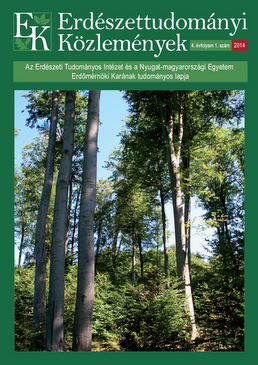| 1. | AGROTOPO – Fizikai talajféleség térkép (on-line elérhető térkép). URL |
| 2. | de-la-Muela, N.; Hernández-de-Luján, S. and Ferre, I. 2001: Helminths of wild boar in Spain. Journal of wildlife diseases, 37 (4): 840-843. DOI: 10.7589/0090-3558-37.4.840 |
| 3. | Foata, J.; Culioli, C.-L. and Marchand, B. 2005: Helminth fauna of wild boar in Corsica. Acta Parasitologica, 50 (2): 168‑170. |
| 4. | Hirka A. 2010: A 2009. évi biotikus és abiotikus erdőgazdasági károk, valamint a 2010-ben várható károsítások. Erdészeti Tudományos Intézet, Erdővédelmi Osztály, Mátrafüred. |
| 5. | Hirka A. 2011: A 2010. évi biotikus és abiotikus erdőgazdasági károk, valamint a 2011-ben várható károsítások. Erdészeti Tudományos Intézet, Erdővédelmi Osztály, Mátrafüred. |
| 6. | Hirka A. 2012: A 2011. évi biotikus és abiotikus erdőgazdasági károk, valamint a 2012-ben várható károsítások. Erdészeti Tudományos Intézet, Erdővédelmi Osztály, Mátrafüred. |
| 7. | Hirka A. 2013: A 2012. évi biotikus és abiotikus erdőgazdasági károk, valamint a 2013-ben várható károsítások. Erdészeti Tudományos Intézet, NÉBIH Erdészeti Igazgatóság, Mátrafüred. |
| 8. | Janik G.; Tóth J.; Csóka Gy.; Szabóky Cs.; Hirka A. és Koltay A. 2008: Az erdészeti jelentőségű cserebogarak életmódja. 350-380. in: Az Erdészeti kutatások digitális, ünnepi különszáma az OEE 139. Vándorgyűlésének tiszteletére. |
| 9. | Kassai T. 2003: Helmintológia. Medicina Könyvkiadó, Budapest. |
| 10. | Kates, K.C. 1942: Viability of eggs of the swine thorny-headed worm (Macracanthorhynchus hirudinaceus). Journal of Agricultural Research, 4 (2): 93-100. |
| 11. | Kennedy, C.R. 2006: Ecology of acanthocephala. Cambridge University Press, Cambridge. |
| 12. | Mowlavi, G.R.; Massoud, J.; Mobedi, J.; Solaymani-Mohammadi, S.; Gharagozlou, M.J. and Mas-Coma, S. 2006: Very highly prevalent Macracanthorhynchus hirudinaceus infection of wild boar Sus scrofa in Khuzestan province, southwestern Iran. Helminthologia, 43 (2): 86-91. DOI: 10.2478/s11687-006-0017-x |
| 13. | Pavlović, I.N.; Kulišić, Z.B.; Tambur, Z.Ž. and Protić, N.M. 2010: Scarabidae – intermediate host for Macracanthorhynchus hirudinaceus. Proceedings for Natural Sciences Matica Srpska, 119: 89-95. DOI: 10.2298/zmspn1019089p |
| 14. | Reiczigel J. and Rózsa L. 2005: Quantitative Parasitology 3.0. (szoftver) URL |
| 15. | Richardson, D.J. 2005: Identification of cystacanths and adults of Oligacanthorhynchus tortuosa, Macracanthorhynchus ingens, and Macracanthorhynchus hirudinaceus based on proboscis and hook morphometrics. Journal of Arkansas Acaemy of Science, 59: 205-209. |
| 16. | Sattari, A. and Motamedi, G. 2006: A study on intestinal helminthes of dogs, foxes and jackals in the western part of Iran. Veterinary Parasitology, 142 (1-2): 129-133. DOI: 10.1016/j.vetpar.2006.06.024 |
| 17. | Sugár L.; Kovács A. és Tóth Cs. 2008: Keszthelyi és bakonyi vaddisznók buzogányfejű férgessége. 19. In: MTA Állatorvostudományi Bizottsága Szent István Egyetem Állatorvos-tudományi Doktori Iskola, Akadémiai Beszámolók, Parazitológia, halkórtan. |
| 18. | Swales, W.E. and Gwatkin, R. 1948: Experiments to determine the role of the thorny-headed worm, Macracanthorhynchus hirudinaceus, in the occurence of disease of pigs in Canada. Canadian Journal of Coapative Medicals, 12 (11): 297‑299. |
| 19. | Taylor, M.A.; Jackson V.; Zimmer I.; Huntley S.; Tomlinson A. and Grant R. 2006: Qualitative Veterinary Risk Assessment: Introduction of Exotic Diseases (other than Rabies) in the UK. Veterinary Surveillance Team, Central Science Laboratory, Sand Hutton, York. |
